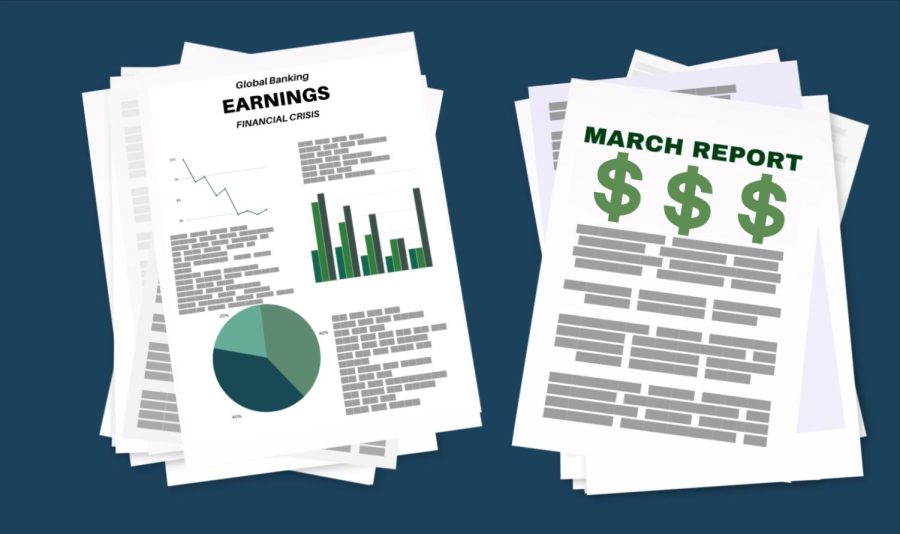Banking sector signals its concerns in latest earnings reports
May 1, 2023
Regional and large-sized banks began to release their first-quarter earnings reports during the week of April 17, showcasing the landscape of the banking sector.
The collapse of prominent regional banks, such as SVB Financial Group, sent shockwaves of uncertainty and volatility through depositors’ confidence, banking stocks and the economy’s future.
Economists at the Federal Reserve predicted in its March meeting that the banking crisis will lead to a “mild recession starting later this year, with a recovery over the subsequent two years.”
Investors have set their eyes on big banks’ earnings reports, which play the most significant role in the banking sector. The United States’ largest banks exceeded their expectations.
JPMorgan Chase & Co., Citigroup Inc., Wells Fargo & Co. and PNC Financial Services Group Inc. disclosed their financial data on April 14.
JPMorgan reported a 52% increase in profits, amounting to $12.6 billion alongside $38.3 billion in revenue. This is up 25% from the same time last year, according to the firm’s first-quarter earnings report.
“Our years of investment and innovation, vigilant risk and control framework and fortress balance sheet allowed us to produce these returns,” JPMorgan CEO Jamie Dimon said in the report, adding that the financial institution’s endurance “also act as a pillar of strength in the banking system and stand by our clients during a period of heightened volatility and uncertainty.”
Wells Fargo saw a net income of $5 billion, but its shares were down 0.2% after it beat first-quarter expectations. Citibank reported a net income of $4.6 billion and a 12% increase in revenue. PNC saw a net income of $146 million, which is up 9% from the previous quarter, but a 3% decrease in revenue.
Mike Mayo, managing director at Wells Fargo Securities, told Marketplace that big banks were performing fine, adding that their “earnings so far could be described as Goliath in winning.”
The performance of big banks is widely attributed to depositors taking their assets out of small and regional banks and putting them into bigger banks where they see less risk. The Fed’s interest rate hikes, added on top of adjustable-rate loans, are also cited factors.
Adjustable rate loans are a kind of credit with a variable interest rate, which fluctuates over time based on current rates and index performances. In comparison to a fixed-interest rate loan, these loans are favorable within the first couple of years.
Conversely, small and regional-scale banks such as Western Alliance Bancorp., Truist Financial Corp., Zions Bancorp. and Huntington Bancshares Inc. expect to earn less on loans and pay more for deposits, which result in lower revenue and profit expectations, according to Yahoo Finance.
Provisions increased in virtually all earnings reports, despite the scale of the bank, signaling banks are preparing for what comes ahead. Provisions are funds set aside by banks to be used to pay off losses from loans borrowers default on.
Recent layoffs and unfavorable economic conditions make it hard for borrowers to repay the loans they’ve taken out, thus potentially hurting banks.
“Because some of those people who lose their jobs aren’t going to be able to pay their credit cards on time, or they may not be able to pay their mortgages,” Mayra Rodriguez Valladares, the managing principal of the consulting firm MRV Associates, explained to Marketplace. “They really do need to get ready for that impending rainy day.”







